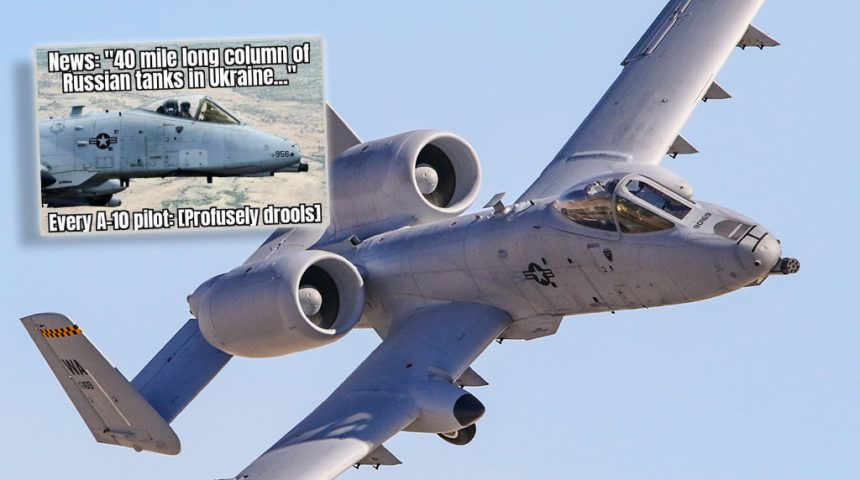A-10 Pilots Say Why Stopping the Russians Outside Kyiv Is a Very Dangerous Mission.
In every war, some images become iconic. So far in the Ukrainian war, the MAXAR satellite photos of Russian vehicles lined up for “40 miles” along the PO2, T1019 and T1011 highways north of the Hostomel Airport outside the Ukrainian capital of Kyiv have made headlines around the world.
The photos of highways clogged with Russian invasion forces have prompted armchair experts on social media to post memes of the A-10 Warthog with “BRRRRRRT!” scrawled across them. The Facebook “experts” suggest a few A-10s could just roll in and use their GAU-8 30mm cannons and AGM-65 Maverick missiles to decimate the Russian vehicle column. “That’s what I told my wife!” one of the posts read.
But according to current A-10 pilots, there’s only one problem, “It’s not that easy”. An Air National Guard A-10C Thunderbolt II pilot told TheAviationist.com. “It has to be a pretty permissive environment for us to just roll in and do a gun run. That doesn’t happen much anymore.”
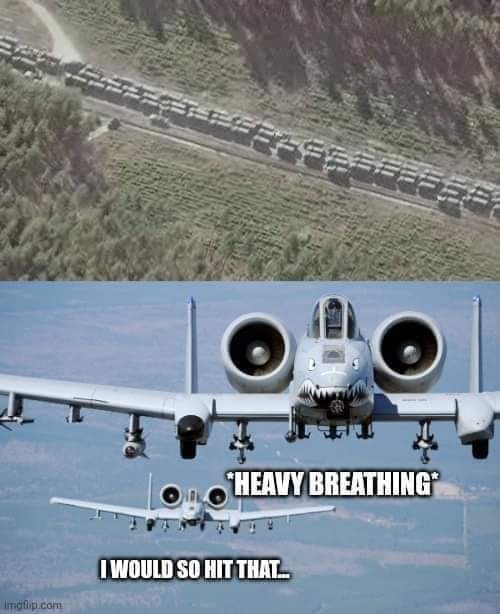
Even before the Russians crossed the border into Ukraine, defense and aerospace analyst David Axe wrote in Forbes magazine that, “If Russia invades Ukraine, its front-line air-defenses will be the most dangerous in the world”. Axe went on to say in his January 10, 2022 article, “If that Russian army rolls in, a whole lot of additional MANPADS and SAM vehicles will come with it. They, combined with longer-range SAMs on the Russian side of the border, could force the Ukrainian army in Donbas to fight without the benefit of any aerial support”.
While some of Axe’s analysis hasn’t been entirely accurate – the Ukrainians have gotten some combat aircraft in the air- they have already suffered the loss of one of their most celebrated combat pilots, Col. Oleksandr Oksanchenko, who was shot down in his Sukhoi by a Russian S-400 Triumph surface-to-air missile (SAM) near Kyiv on Friday, Feb. 25, 2022.
And even though recent upgrades to A-10C Thunderbolt II have improved its targeting and communications capabilities, the A-10 was built to fight a very different war than the one we are seeing now in Ukraine.
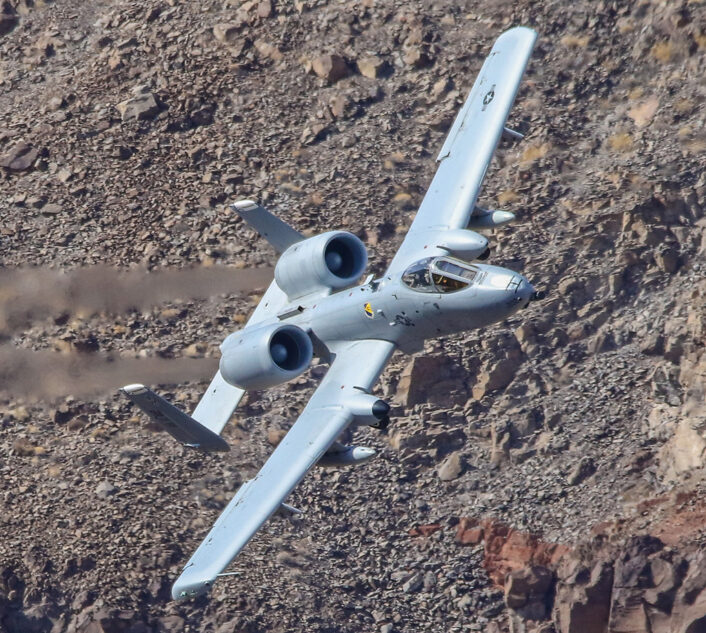
The A-10 was originally conceived to offset a massive imbalance in the number of tanks between the Soviet-backed Warsaw Pact and the NATO alliance.
Strategists anticipated a huge flood of Russian tanks pouring through the Fulda Gap in Germany. At the height of the Cold War, the A-10 was intended to moderate that imbalance by providing a dedicated tactical anti-armor asset that could kill Soviet tanks. But although the A-10 was heavily armored with a titanium tub surrounding its cockpit, its prospects for survival even in the Soviet air defense era were poor due to a concentration of effective, highly mobile anti-aircraft weapons systems perfected by Russian suppliers in the real-world testing grounds of the Vietnam War and the many Arab-Israeli wars.
In his 1993 book, “Warthog: Flying the A-10 in the Gulf War”, author William H. Smallwood wrote about the dangers A-10 Thunderbolt II pilots faced when performing close air support missions over Iraq. Smallwood quoted A-10 pilot Capt. Tom Dean as saying:
“I myself figured that, knowing the number and kind of SAMs [surface-to-air missiles] the Iraqis had, that if we ever went to war, 20 to 25 percent of us were not coming back.”
Capt. Dean related one of his missions in Iraq to Smallwood:
“I rolled in and as I was strafing the target I started taking AAA [Anti-Aircraft Artillery fire]- heavy AAA. I was diving at about a 60-degree dive angle – and this was my near-death experience. I saw what appeared to me to be a fireball come by my canopy. It was either heavy AAA going by or a missile…”
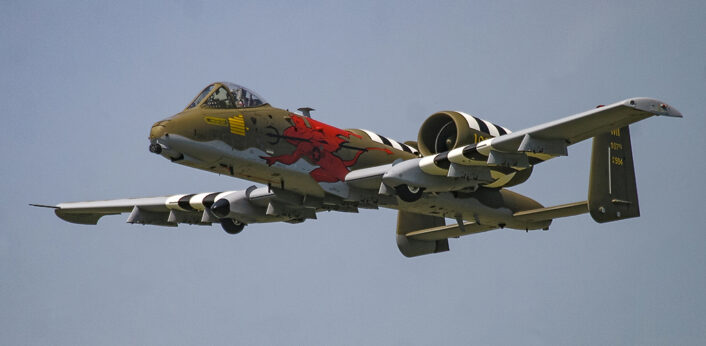
Going back as far as the Vietnam conflict, the Republic F-105 Thunderchief, a supersonic aircraft designed for high-speed medium and low level nuclear strike missions, suffered withering losses over North Vietnam, a country protected by a Soviet designed air defense network. According to researcher Rebecca Grant of AirForceMag.com, “The cumulative totals were shocking: The Air Force lost 40 percent of its total production of F-105s to combat in Vietnam.” And it was nearly as bad for the iconic F-4 Phantom II. Grant writes, “Approximately one out of every eight F-4s ever built by McDonnell Douglas—for all services—was destroyed in Vietnam”.
And remember, these losses were to early Soviet Bloc air defense systems supplied to the North Vietnamese and almost always crewed by North Vietnamese, although intelligence suggested Soviet “advisors” also played an active role in the air defense of North Vietnam.
In the post-Vietnam era, U.S. strike doctrine improved exponentially with the introduction of “stealth” or low radar observability when the F-117 Night Hawk, the “stealth fighter”, was introduced. For a decade, the F-117 “stealth fighter” operated with near-impunity against sophisticated Soviet-bloc air defenses during precision, low observable strikes. In December, 1989, during Operation Just Cause in Panama, U.S. F-117s dropped laser-guided bombs next to a Panamanian barracks as a diversionary strike. And in the F-117’s greatest performance on January 17, 1991, the stealth fighter brought “shock and awe” to downtown Baghdad, Iraq in the opening hours of Operation Desert Storm.
But even this temporary immunity to Soviet-designed air defense systems was fleeting. On March 27, 1999, the Yugoslav 3rd Battalion of the 250th Air Defense Missile Brigade shot down a USAF F-117 Nighthawk with an S-125 Neva/Pechora surface-to-air missile (SAM) outside Budanovci, Serbia in Yugoslavia. Russian air defense doctrine had achieved parity with U.S. stealth technology.
It’s important to understand that the A-10 Thunderbolt II first flew a half century ago in early 1972. It wasn’t until almost a decade later in 1981 that the F-117 flew for the first time. In fact, it could be argued that the Republic A-10 Thunderbolt II actually has more in common with its WWII namesake, the propeller-driven Republic P-47 Thunderbolt, than it does with the current low-observable F-35 Lightning II that can strike a vehicle column with impunity from a distance using precision stand-off weapons.
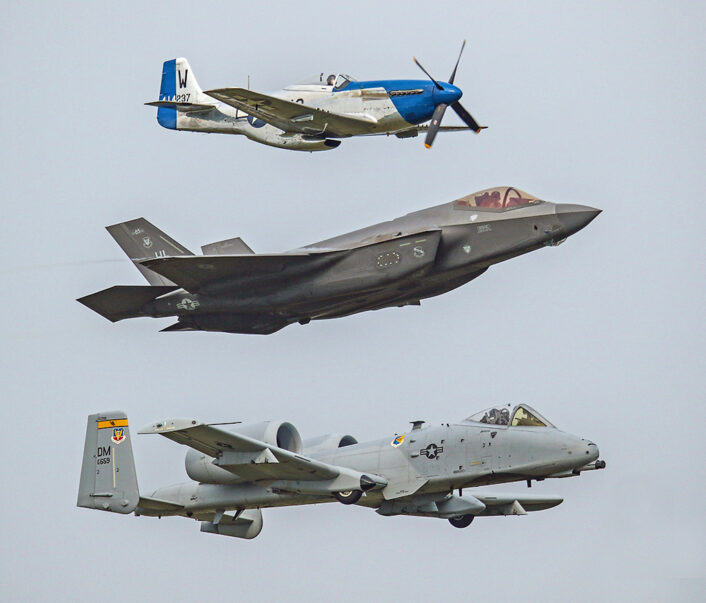
And while the cost of hitting a $10-20,000 USD Russian truck with a $25,000-plus precision guided JDAM (Joint Direct Attack Munition) seems high, remember, it costs between $5-million and $10-million USD to train a U.S. Air Force pilot.
Consider that 31 years have passed between the first flights of the WWII P-47 Thunderbolt and today’s A-10 Thunderbolt II. But 34 years have passed between the first flight of the A-10 Thunderbolt II and the current F-35 Lightning II. And, during this entire time, the Russians have been perfecting the capability to shoot down western aircraft at test sites in Russia and real-world battlefields from Cuba to Africa, the Middle East, Indo-China and the Arctic.
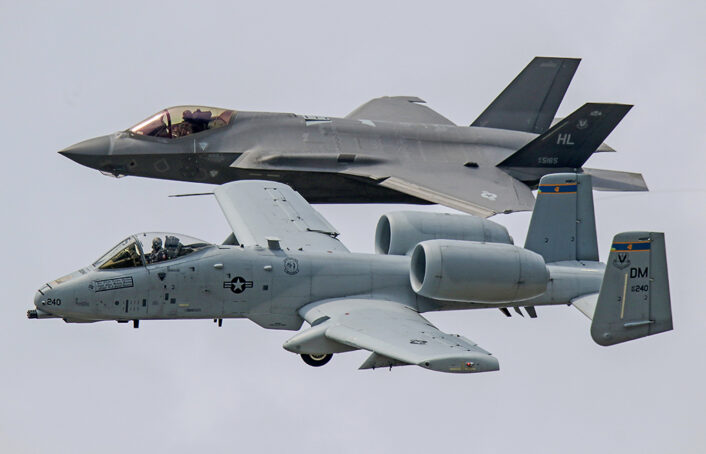
So, while we all love the A-10 Thunderbolt II, she is better off in the asymmetrical global war on terror than she is in this new super-power slugfest in Ukraine, even though that reality ruins a lot of social media defense experts’ memes.

